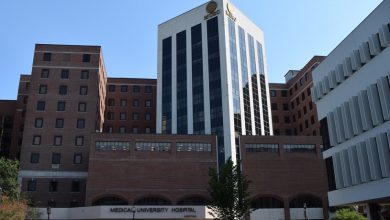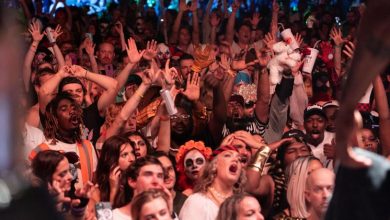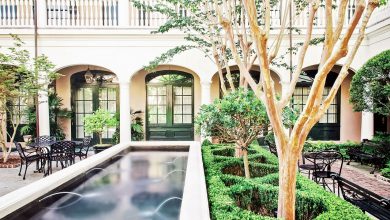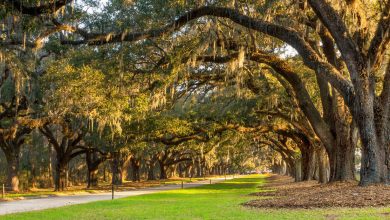From the founding of Charles Towne to the Revolutionary War, from pirates to politicians, from rice plantations to the Civil War to today; Charleston is all about heritage and history. Every cobblestone on narrow streets, every fire badge and every high water mark on buildings tells the city’s story to anyone willing to look. The city has survived countless hurricanes, a major earthquake and invasions and occupation by foreign armies. She wears her scars proudly.
Charles Towne Landing takes you back to the founding of the original city in 1670, just up the Ashley River from the city’s current location. Today, the landing is open daily with an interactive visitors center, self-guided history trail tours and the kids’ favorite; the 17th-century sailing ship the Adventure.
Up the Ashley River are three major plantations that have survived the centuries and are open to visitors: Middleton Place Plantation was granted to Jacob Waight in 1675. The land passed through daughters until Mary Williams married Henry Middleton and began laying out the garden in 1741. Burned during the Civil War, the home also suffered significant damage during the 1886 earthquake and wasn’t fully restored for visitors until the mid-20th century. Today, with a hotel and restaurant on the property, Middleton Place is a very popular wedding location. Eliza’s House, a relic of the freedmen housing built after the war, still stands. Two tours daily focus on the history of African-Americans on the plantation and throughout the state and the South. For the youngsters, the stable yards feature craft demonstrations by artisans dressed in period costumes as a weaver, cooper, carpenter and blacksmith.
Magnolia Plantation and Gardens was founded by the Drayton family in 1676 and opened to tourists soon after the Civil War. The famed gardens are open for self-guided or guided tours. The Audubon Swamp Garden lets visitors see a blackwater cypress swamp up-close with a series of boardwalks.
Drayton Hall was a built between 1738 and 1742 by a later generation of Draytons just down the river from Magnolia. The home remains as it was with no electricity, heating, air or plumbing and is a National Trust Historic Site.
On the Mount Pleasant or Cooper River side of Charleston is Boone Hall Plantation. Open to the public since 1956, Boone Hall is still a working plantation; growing strawberries, tomatoes and pumpkins. The plantation has two unique presentations: “Exploring the Gullah Culture” and “Black History in America,” which explore the lives of African-Americans from their arrival in the Lowcountry through today.
The Battery/White Point Gardens/pirates
White Point Gardens was first opened as a city garden in 1837, but its notorious history goes back to the early 18th century when the pirate Stede Bonnet and other outlaws were hanged there. It became a fortification point for the city during the Civil War and today, the gardens display mortars and cannons from the era and a monument to Confederate soldiers. It is a great spot to park and walk along the Battery.
Rainbow Row, 83-107 East Bay Street. Most folks have seen pictures of this stretch of 14 privately-owned homes along East Bay Street. Built in the early 18th century, these pastel colored homes are the epitome of historic Charleston. A great place to stroll with your camera.
Museums/houses
The Charleston Museum is the official keeper of the city’s history and heritage. The museum also operates two historic houses: the Joseph Manigault House, home of one of the city’s founding fathers; and the Heyward-Washington House, which can honestly say “George Washington slept here.”
The Preservation Society of Charleston offers candlelight tours in the fall and is an excellent starting point for learning about the efforts to protect and preserve the city’s history. The society also operates a bookstore and visitor center.
Fort Sumter is operated by the National Park Service and tells the story of the first shots of the Civil War, when Confederate forces fired on U.S. troops in the fort at the mouth of the harbor. Tours leave from downtown and Mount Pleasant several times a day depending on the season. The trip takes nearly three hours, but is well worth it.
The Old Slave Mart Museum is probably the only building remaining in South Carolina that was known to have been used as a slave auction site. The complex here included a slave jail, morgue and kitchen. The last slave auction was held in November 1863. The museum tells about Charleston’s role in the slave trade.
The Aiken-Rhett House was built in 1820 by Gov. William Aiken Jr. Many of the objects collected by the governor and his wife on their European travels are still with the home. The grounds include the home’s kitchens, slave quarters, stables and outhouses. This is one of the city’s best examples of life during the heyday of the Old South.
Edmondston-Alston House has a fantastic view of the harbor and Fort Sumter and was where Gen. P.T. Beauregard watched the bombing of the fort to start the Civil War. Confederate Gen. Robert E. Lee stayed here when his accommodations were threatened by a fire in the city.
The Citadel is South Carolina’s military college and its cadets played a role in the start of the Civil War, firing first on the U.S. supply ship Star of the West and then on Fort Sumter to start the war. Today, cadets drill on Summerall Field most Fridays during the school year. The parades are free and open to the public. The complete schedule is available on the website.
Churches
Charleston got its nickname of the “Holy City” because of welcoming of faiths from all around the world and the number of steeples that dot the city’s low-profile skyline. Many of these churches have great historical significance of their own.
St. Philip’s Episcopal Church is hard to miss as Church Street traffic has to work its way around the church. Completed in 1838, the church’s graveyard includes the final resting place for U.S. Vice President John C. Calhoun, signer of the Declaration of Independence Edward Rutledge and Dubose Heyward, author of “Porgy” – on which the Gershwin opera “Porgy and Bess” was based.
Circular Congregation Church was organized in 1681 but got its unique name from the Robert Mills-designed circular building it moved into about 120 years later. That building was destroyed by fire in 1861 and damaged by the 1886 earthquake. The present building opened in 1891.
Emanuel African Methodist Episcopal Church, commonly known as Mother Emanuel, was made up of freedmen and slaves when it started in 1791. In the 1820s, Denmark Vessey plotted a slave rebellion in the church, and it was closed. The congregation was reorganized at the end of the Civil War, and the current building was built in 1891. The front of the church today is filled with memorials to the Rev. Clementa Pinckney and other parishioners who were slain inside the building in 2015.
Charleston is home to the second-oldest synagogue in the U.S. in Kahal Kadosh Beth Elohim and the oldest Baptist church in the South in First Baptist Church, which was founded in 1682, the congregation moved into its Robert Mills-designed building in 1822.
The French Protestant (Huguenot) Church moved into its present building in 1845, but its congregation dates back to 1687 when French Protestants fled persecution at home.
Old St. Andrews was built in 1706 and is one of the oldest churches in South Carolina still in use. The Rev. John Grimke Drayton, who built the beautiful gardens at Magnolia Plantation, served as the church’s rector for 40 years; but after his death in 1891, the church was virtually abandoned until the mid-20th century. The reopening of the church after World War II led to one of its greatest traditions: the Annual Tea Room and Gift Shop, which celebrated its 62nd year in 2015. The week-long event features lunches of soups, salads and sandwiches and handmade crafts in the gift shop. Proceeds from the event support the church women, who also provide daily tours of the church.





Leave a Reply
You must be logged in to post a comment.